Description
Product Ingredients
(Goat Milk, 78% Organic, All Natural)
Saponified Oil (Organic Sustainable Palm Oil, Organic Coconut Oil, Organic Sunflower Oil, Organic Extra Virgin Olive Oil, Jojoba Oil), Water, Sodium Hydroxide, Goat Milk, Natural Fragrance Blend(Geranium Essential Oil, Palmarosa Essential Oil, Natural Fragrance, Rose Absolute), Kaolin Clay, Bentonite Clay, Illite Clay, Rosehip Extract
RETURN & REFUND POLICY
Returns & exchange
100 percent money-back guarantee.
If you’re not happy with our soap, we’re not happy.
SHIPPING INFO
Orders ship within 2 to 3 days of receipt. All orders ship by 4 p.m. from Waconia, MN. Orders usually arrive within 3 to 10 days of shipping.
Rose
Common Scents: Rose Absolute
Think of a flower. Was it a rose? If it was, that’s no surprise; the rose is one of the most recognizable flowers in the world! Besides being the symbol of love, romance and beauty, roses are widely used in soaps and cosmetics and have been revered throughout history for their intoxicating aroma.
Rose Oil
Rose oil comes in two different forms and is extracted from the petals of the rose flower, from the genus Rosa of the plant family Rosaceae. The rose is native primarily in temperate areas of the northern hemisphere, and is grown in Asia, North America, Europe and northwest Africa.
What’s in a Name?
The word rose comes from the Latin word rosa and transformed into the spelling we know today via Old French.
A Sweet Smelling History
Roses have a long history of inspiring love, temptation and promoting beauty. Let’s take a stroll into the mythical history of this beautiful flower to find out why it has stood the test of time as the prevailing material way to show affection.
Asia
In ancient Persia as well as in ancient Indian literature, the rose is used symbolically as a tool in the creation of the world and of mankind. For example, Vishnu (the supreme god of India) created Lakshmi, his bride, out of 108 large rose petals and 1,008 smaller rose petals.
Greece
In Greece, it was believed that Aphrodite created the rose after her love, Adonis, was wounded on a hunt for a boar. When she heard that he was suffering, she rushed to him and her tears mixed with his blood to form red roses. It was also believed that the sea foam from which Aphrodite was formed created white rose bushes wherever it touched land!
Rome
The Romans believed that Flora, the Goddess of springs and flowers, was so distraught when she found the dead body of her most beloved and beautiful nymph that she called out to the other gods to help her transform the nymph’s body into the Queen of Flowers (widely considered to be the rose). Hearing her call, Apollo gave the nymph the breath of life, Bacchus bathed her in nectar, Vertumnus gave her fragrance, and Flora gave the nymph petals so that she would always be remembered as being beautiful.
In Religion
Christians widely believed that the rose did not have thorns until Adam and Eve were expelled from the Garden of Eden, and the thorns were formed because of mankind’s wickedness. In Islam, roses are said to be formed from the perspiration of the Prophet Mohammed.
Types of Rose Oil
There are two types of oil that you will come across in your search. The extraction and distillation of rose oil dates back to before the French Revolution, when the French would distill roses specifically for the use of their famous rosewater!
Rose Otto:
Rose otto, also called attar of roses, is an oil produced via steam distillation of roses, specifically the Damask rose. This oil is usually either olive green or a pale yellow and has a scent that is described as floral and spicy.
Rose Absolute:
The more commonly used of the rose oils, rose absolute is produced using solvent extraction and is favored for its lower price point. Rose absolute is noticeably thicker than rose otto and is usually olive green or red/orange in color. The scent of rose absolute is described as light and floral, and is the closest to the popular rose scent of the two oils.
To produce one ounce of rose absolute, approximately 60,000 roses are needed. This is why rose absolute is more expensive then many other popular essential oils; the process of extraction is much more time-consuming and costly. Flowers are typically picked by hand before sunrise and then the extraction process begins!
Benefits of Rose Oil
Besides allegedly inciting feelings of love, rose absolute has been used throughout history for many ailments, including:
- Stress relief
- Anxiety reduction
- Menstrual and menopausal symptom relief
- Wrinkle reduction
- Puffiness
- Eczema
- considered the mildest of the clays
- works with all skin types including sensitive and mature
- cleanses and detoxifies at the skin level
- exfoliates dead skin cells
- can treat acne and sun damaged skin
- can increase blood circulation to the skin
- most often found in body wraps, face masks, scrubs and cosmetic powders
- this clay is a blend of kaolinite, iron, illite, montmorillonite and calcite
- this clay is composed of kaolinite, silicon oxide, aluminum oxide, iron oxide and titanium oxide
- very mild clay, good for dry or sensitive skin
improves circulation to the skin - exfoliates and cleanses
- found in facials, natural deodorants, poultices, scrubs, mineral makeup and body powders
- kaolin has been used in a shaving soap at 1 T for every 4 pounds soap base
- contains hematite iron, copper oxides, kaolinite, illite, montmorillonite and calcite
- may look like dirt or rust
- good for normal to oily skin types
- great for cosmetics
- also good for detoxifying facial masks, body wraps, bath powders, makeup, scrubs and poultices.
- this clay is composed of iron, silica, aluminum, magnesium, calcium, titanium, sodium, and potassium
- usually mined while wet, then crushed, sun-dried, then ground and micronized
- stronger pulling action, detoxifying action, to skin
- increases skin circulation, tighten pores, and tone skin
- great as a poultice for sore muscles, sprains, arthritis, insect bites, stings, and mineral bath
- used often in cosmetics, body wraps, soap, facial masks, skin cleansers, and facial powders.
- a gentle clay, good for dry or sensitive skin
- make of minerals and iron oxides, but no aluminum
- detoxes at skin level, drawing out impurities
- removed dead skin cells and acts as a toner
- also used in body wraps, facials, etc.
- stronger than the other clays
- contains silica, aluminum, iron, sodium, magnesium, potassium, calcium
- the high ion exchange allows for a stronger absorption, to reduce redness and flakiness
- improves clarity and elasticity of skin
- found in spa products, including masks, etc
- good for an oily complexion.
Remember: this information is being provided strictly for educational and entertainment purposes. The FDA has not approved rose absolute or rose oil in general for medical use. The HSCG does not give medical advice and does not advise using rose absolute for medicinal purposes.
Adulteration
Because it is so expensive to produce, some dishonest merchants dilute their rose oil with other oils like geranium and palmarosa. Sometimes, these oils will still be marketed as pure rose absolute oil; be sure to buy from respectable and historically honest suppliers and ask questions about the oil’s origin to make sure you don’t spend rose absolute money on mostly geranium oil!
Roses
Final Thoughts
Using rose absolute oil in your soap and cosmetics can add a light, romantic scent that is both uplifting and inspiring. With the storied history behind the rose, you have many talking points for your rose-scented products; don’t let the expense of the oil dissuade you! A light touch with a high quality rose oil will make any soap or cosmetic positively float off the shelves. Get creative with fragrance blending and invent your own warm and romantic aroma to keep your customers coming back time and again.
Clay
clay in soap making
You can use clay in soap making as a natural and gentle exfoliate, but you can also use it for skin care, poultices, masks and as a colorant. Clay is one way to make great special purpose facial soaps. Historically, clay’s are created with the forces of the earth’s core and magma, that heat, move and cool down, creating differing types of rock, minerals, crystals, and clay
Most clays are found where they settle after eons of freezing and thawing and water movements. Some clays mix with other clays and this mixing and moving creates fine grained earthy materials that we can use in our soaps, cosmetics, and other purposes.The chemistry of clay is that it is a silicate, which is created with a blend of silicon, oxygen, and one or more minerals, and water. These clays are often found in layers in the ground above or below underground rivers or watery levels. The one common feature of clays is that most tend to be drying to the skin. Which is connected to one of clays best features, its ability to absorb impurities.
Bentonite Clay is actually edible (get the food grade stuff from the Health food store), where it absorbs toxins in your intestines, AND you can use this clay to make an all natural toothpaste. When clay is in a soap bar, you cannot feel the clay exactly, but you can feel a thicker lather. Once your skin is rinsed off, you can feel the gentle exfoliating effects left behind.
About clay in soap making:
When you go to add your clay in soap, if you were to dump the clay right into the pot, you will be chasing lumps of clay around. It is best to put aside a 1/2 – 1 cup of soap base at the start of trace, add your clay to this amount, and mix well. In a 20 bar recipe, start with 1 tablespoon of clay. A small whisk works very well for this. When well blended, add this back to your soap base and mix throughout. When using clays for coloring, make sure to add superfatting at trace to counteract the clays drying effects. All clay in soap making is very fine, so be careful to not create a clay ‘cloud’ and inhale lots of the particles.

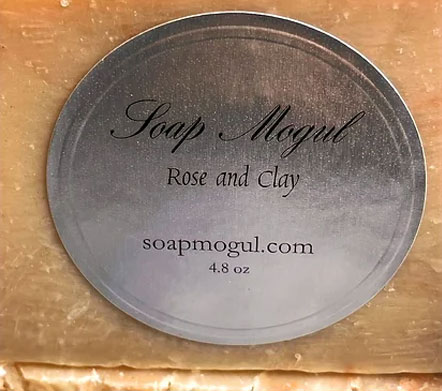
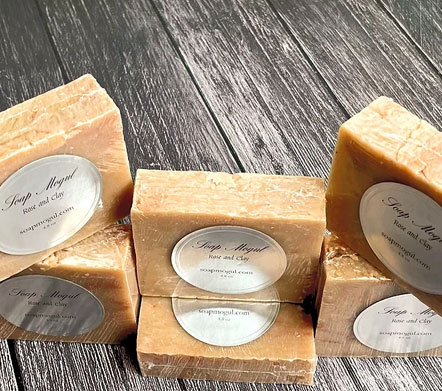
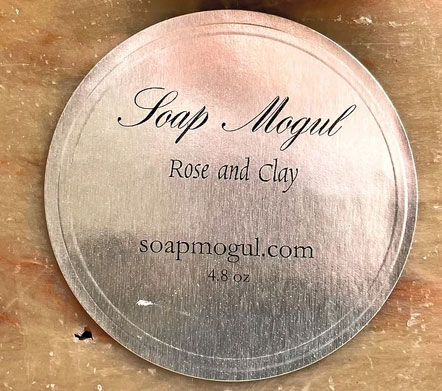
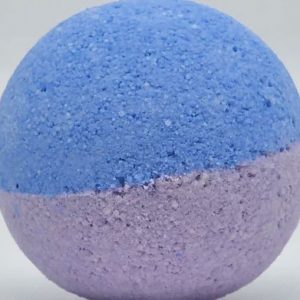
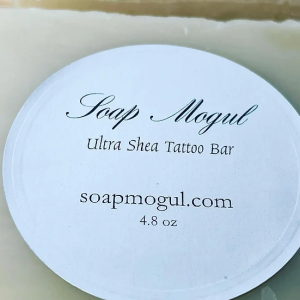
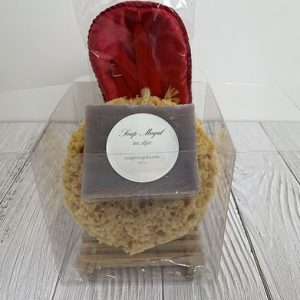


Reviews
There are no reviews yet.